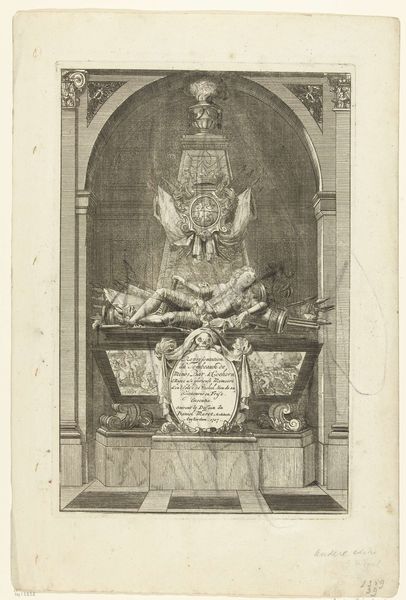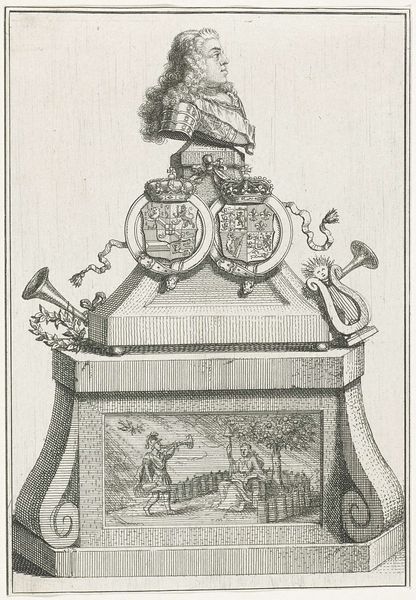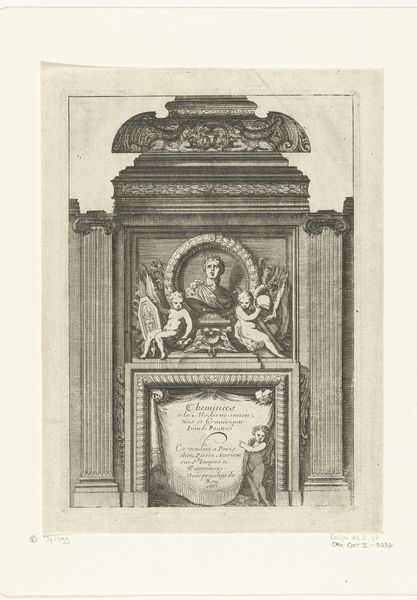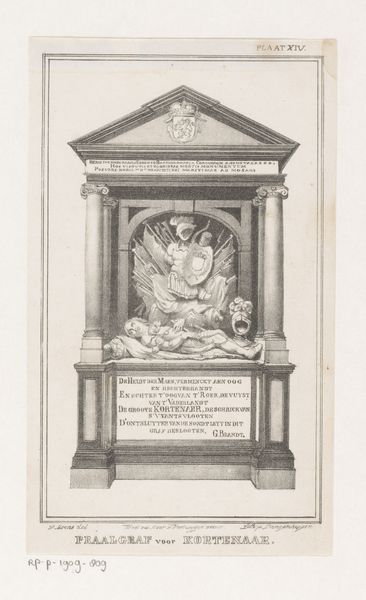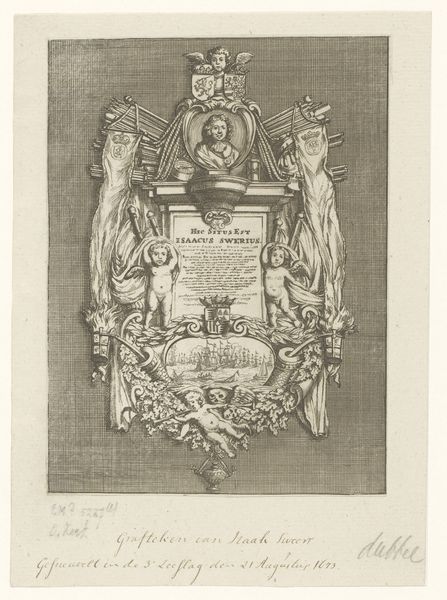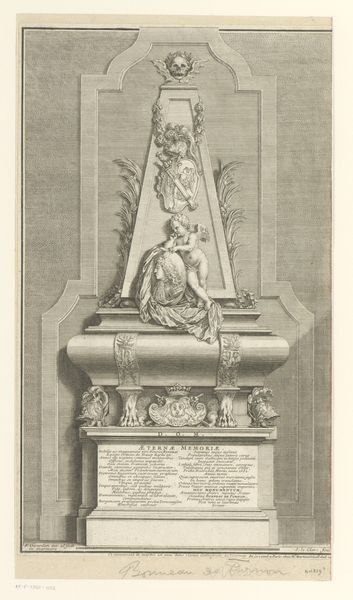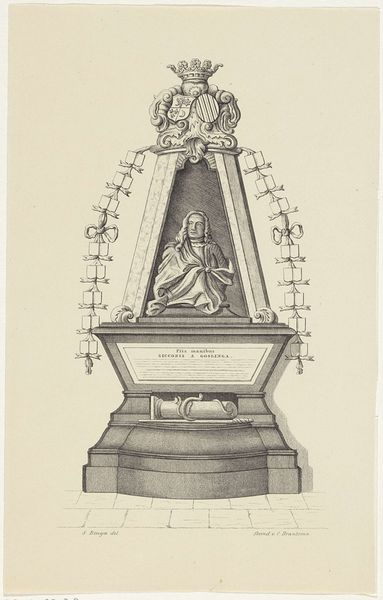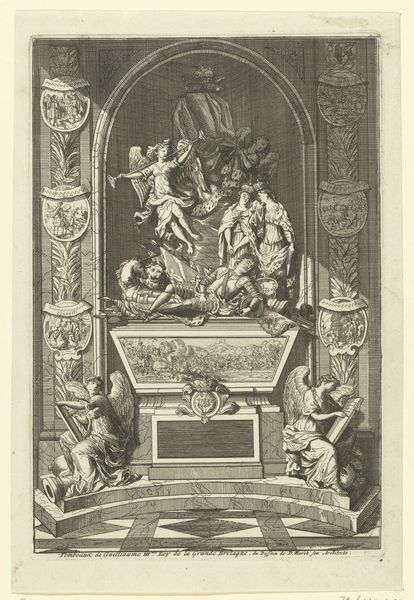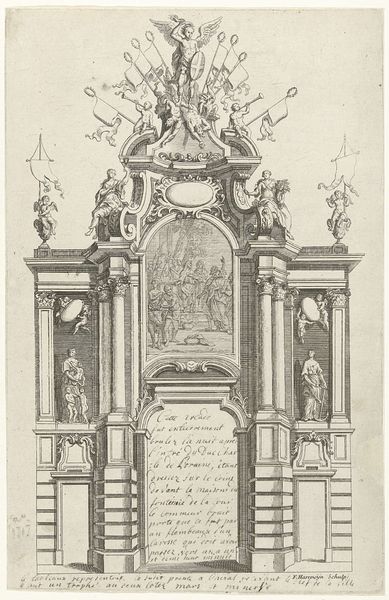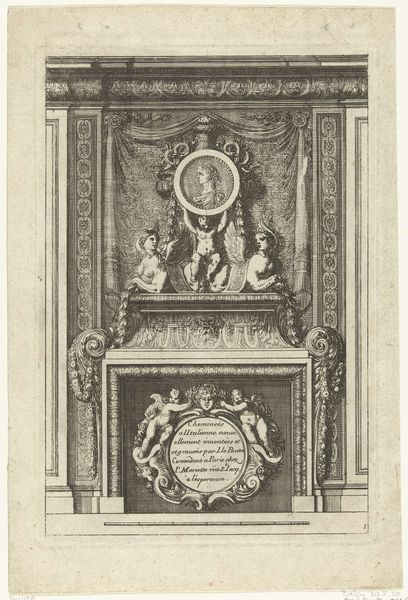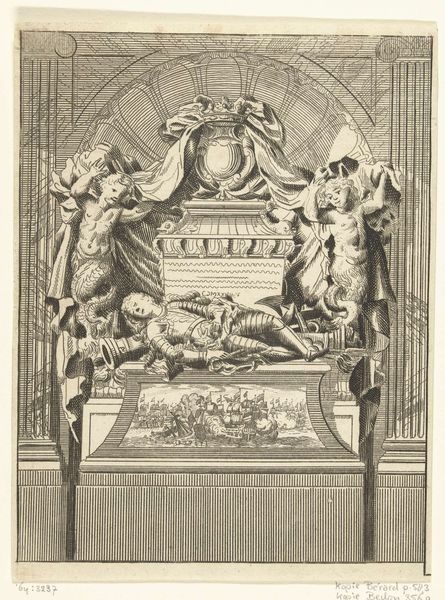
Dimensions: height 182 mm, width 112 mm
Copyright: Rijks Museum: Open Domain
Editor: Here we have Johan Christoffel Schultz's "Grave Monument of Wolter Jan Gerrit Bentinck", an engraving from 1781. The sheer detail in the rendering of the flags and the naval battle really strikes me. What's your interpretation of this memorial? Curator: Well, I find myself drawn to the printmaking process itself. The lines, the crosshatching – these are all deliberate acts of labor. Look at how this engraving renders the grand narrative of Bentinck's life; the means by which it’s reproduced democratizes it, bringing the elite into mass consumption. Notice how the flags and naval scene function less as specific representations and more as symbols, acting almost like commodities that signal "heroic death" and "Dutch naval power." It begs the question, who really benefits from the heroic death of this Navy Captain? Editor: I see your point about the mass production aspect diminishing the individuality. I was focused on the naval battle depicted, a historical event perhaps glorifying military exploits, but it also reflects a broader Dutch imperial history. How much does the materiality – the print itself – dictate this reading? Curator: Consider this: the cheap reproducibility of the print allows for wide dissemination, and this accessibility allows the reproduction of not just images but social relations and power dynamics, effectively branding and consuming "heroism." It creates a narrative around naval power available for a wider market of consumers, thus the narrative is divorced from any particularity beyond reinforcing established norms of early capitalist and early imperialist Dutch society. Do you see that the means of production influence the cultural narrative? Editor: That's interesting, and a little cynical. I guess I was reading it more at face value, missing the bigger picture about how its very creation shapes our understanding. It does add another dimension to understanding historical works when thinking about prints like this. Curator: Exactly. It moves beyond aesthetic admiration and into understanding the system that produced and sustained such images. Editor: Thank you for shifting my perspective; now I am aware of the complex ways an artwork, specifically prints, were and are materialistically made and disseminated.
Comments
No comments
Be the first to comment and join the conversation on the ultimate creative platform.
